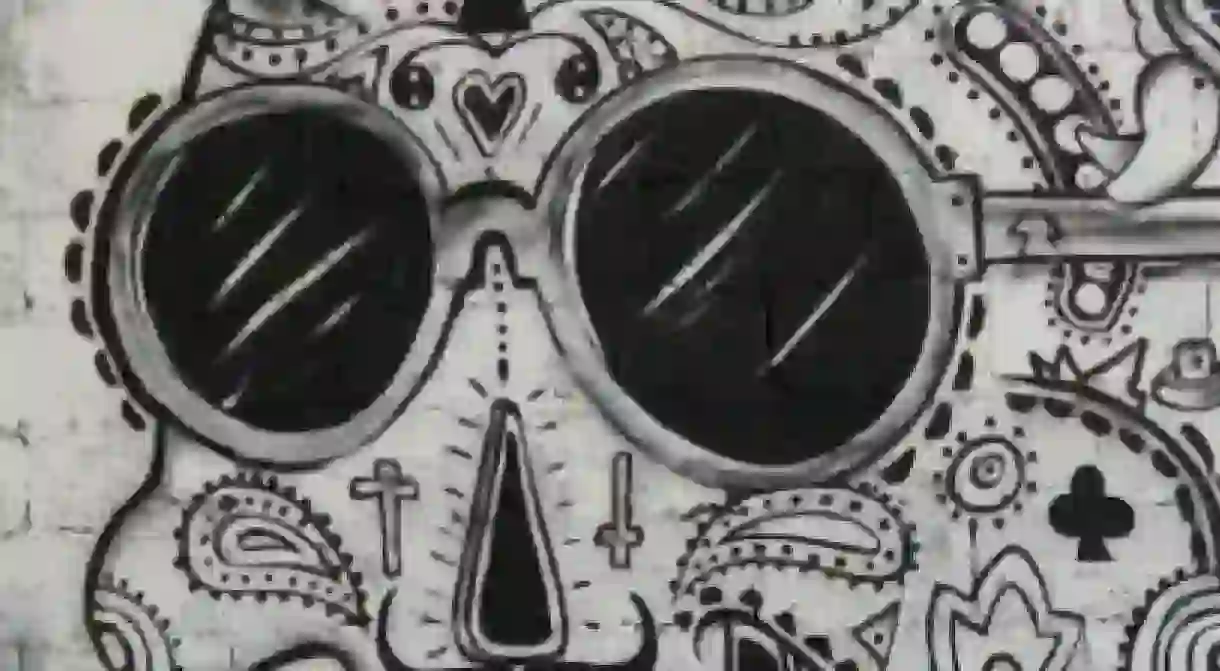The Street Art of Tel Aviv’s Florentin Neighborhood

Tel Aviv’s multicultural and bohemian neighborhood, Florentin offers the casual stroller a repertoire of vintage boutiques, artisanal workshops and cozy cafeterias. Yet one crucial ingredient of the area’s charm blooms not within the walls but on their very surface. Exploring Florentin’s street art uncovers a unique and carefully guarded realm—few rules and an abundance of unbounded, edgy creativity.

The Place
In spirit, Florentin is Tel-Aviv‘s Greenwich Village: people from all walks of life, from around the world, live in this liberal and open-minded community. Located in the south of Tel Aviv, the neighborhood has been the subject of urban renovation plans for over a decade. Many of the buildings were marked for demolition, creating an opportunity for the burgeoning artists. Drawing on walls is still illegal, but municipal authorities turn a blind eye – entire streets have become a no-man’s land, swiftly conquered by spray paint and rich visual ideas. Orienting around Salma road, which serves as the central axis, is a good place to start. Elifelet and Schoken streets are two other central locations, from which smaller alleys branch out. The smaller the alley, the wilder the artwork. While you can’t really get lost here, you can fully enjoy the titillating sensation of getting lost, generously bestowed upon the adventurous traveler by the city’s graces.

The Mood
The most consistent quality in Florentin Street Art is that of absence. For some, it will be an absence of optimism, for others of hope—but the effect is persistent and inescapable. Not all artists explore despair, but the touch of ennui – and sometimes of pure urban blues – doesn’t elude even the most vibrant of compositions. It is the swan song of and to the neighborhood, a farewell to its past. The seriousness of the mood, often suffused with disarming naiveté, can bring visitors to contemplate the fate of the district, as well as some of its darker sides. Many of Florentin’s residents are not strangers to economic hardship, and the walls serve them as a creative outlet. At its sincerest, this self-expression leaves a trail of a parting innocence, inexorably mixed with nostalgia. There are, of course, playful and comic images to be found, but they are rare and far between—and the best, most polished work belongs to the discouraged cohort. Smiles, when they appear, can be distorted and twisted, or bordering on lunacy. Florentin street art will make you contemplate sooner than it will make you laugh, if at all.

The Style
It may seem pointless to identify ‘art styles’ in graffiti. Many street artists will disavow style with the same eagerness they will exert to proclaim disdain for the art establishment. Yet, the more seasoned the artist, the more stylistic clarity and influence his or her work will display. It is not incidental that some of it has been exhibited in galleries, perhaps an inevitable step of maturation, on the side of both the artist and the establishment. Florentin graffiti stylistic influences include expressionism, surrealism, cubism, steam-punk, animation (including anime), fantasy and horror, caricature, and more. For example, such elaborate works by Dede and Fish Air (below) can be immediately placed within the school of Picasso’s and Braque’s avant-garde experimentation with the visual plane. Still, it’s the individual and original touches—enveloped and nourished by the ad hoc ‘exhibition space’—that lend the images their unique character. The mural below shows how the available space dictates the theme and the composition. Within the confines of the city, even such monumental scale appears natural and almost understated. When the only lighting available emanates from the sun, the viewing distills into a humbling experience, and such cliché terms as ‘the fabric of the city’ suddenly assume real meaning. This is street art at its most inspiring and thought-provoking.

The Themes
Street Art in Florentin presents an eclectic blend of themes: classic colorful typography, playful robots, androids and humanoids – sometimes devolving into bizarre explorations of alien anatomy – various quasi-religious symbols, including invented deities, and, the human figure, often disassembled, distorted, and violated. The city itself and its rituals and iconography comprise an underlying theme that binds everything into a loosely collaborative project. The theme of animals deserves a special mention: from strikingly realistic depictions such as the rabbits below, reminiscent of Durer’s illustration, to fantastic and menacing insectoids springing from the walls as if from comic book pages, to solitary blue elks grazing on smog—morosely poetic flights of fancy. More politically oriented works function as slogans that protest meat consumption and the industry it supports.

What Next?
Florentine graffiti has garnered considerable attention during the last decade, winning many fans, admirers, and curators. Blogger Elisheva Zeltzer has compiled an impressive catalog of artists, with some eye-opening analysis; she also offers organized tours in the area. It is said that before a piano dies, the last sounds it produces can be of the sweetest, most delicate tone. In many ways, Florentine street art sings like a dying piano – the crumbling walls are the instrument and the artists are the performers. Make sure you visit this part of Tel Aviv before the walls are torn down and their sound disappears.













